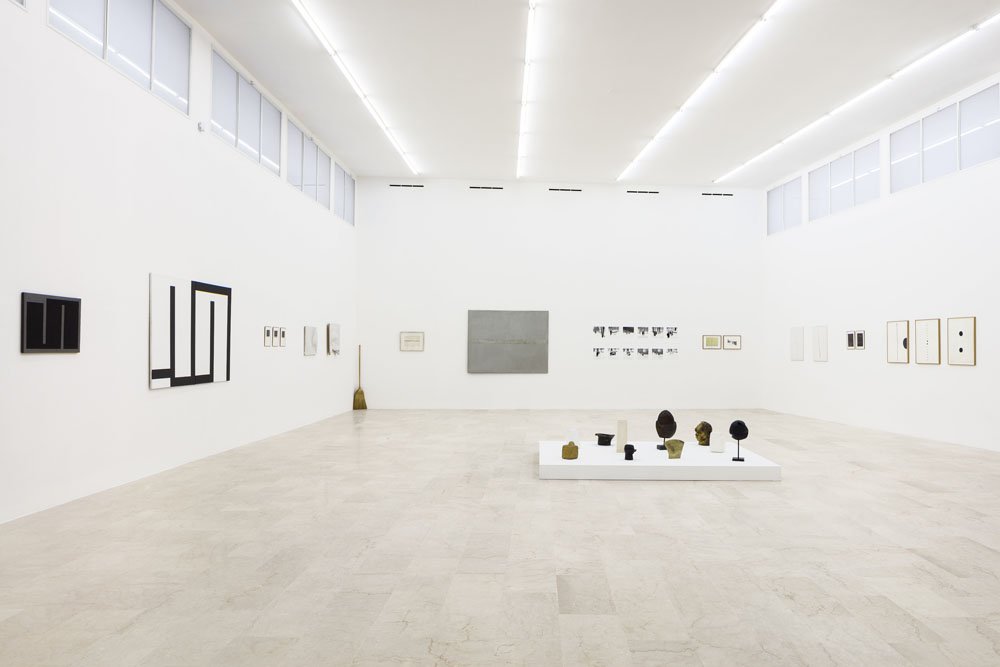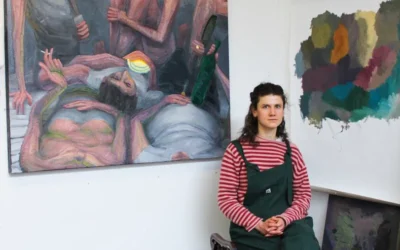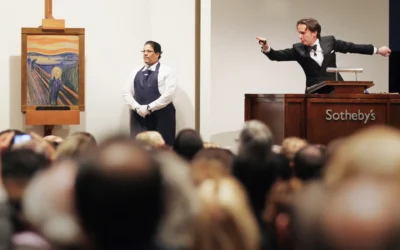By Giulia Damiani.
Between March and May 2017, the gallery P420 in Bologna has hosted an exhibition on the spiritual and intellectual community known as the Gorgona Group. From the late 50s until a decade later, the Zagreb-based Gorgona Group centred around a plethora of activities: the publication of anti-magazines, conversations and collective walks, as well as the individual members’ art practices. The tension between the individual artistic production and a collective legacy is perhaps something which the scattered set-up of the exhibition fails to convey. Gorgona was the rare chance to belong to a group without proclaimed or implied principles. As the historian Nena Dimitrijević has indicated Gorgona wasn’t exactly active, it just existed.
However, archival images and art objects in the space curated by Danka Sosic and Zarko Vijatovic represent the sheer variety of concerns of Gorgona.
The most comprehensive collection of works by these artists is held at the Museum of Contemporary Art in Zagreb, but in the last few years curators from MoMa have brought a significant number of works into the museum’s collection. Despite their ephemeral collective artistic practices inspired the later development of Conceptualism in Eastern Europe, the Gorgona’s show in Bologna is one of the few which has tried to trace the complexities behind the group’s work.
The two rooms in the gallery collect prints, paintings, photographs and a video by the originator of the gatherings which included artists and critics, Josip Vaništa. One of the frames on the wall shows a collage of vintage documents, the Thoughts of the Month, which he shared from the 60s onwards. His messages help understanding the intentions of Gorgona. In a different note from 1961, he describes the group as a collection of potential interpretation, which brought into existence ingredients such as absurdity and emptiness.
The bare quality of the performances documented in the pictures such as Action with Gorgona members Marijan Jevšovar and Radoslav Putar (1986) by Josip Vaništa reminds the ‘zones of indistinguishability’ by the Russian Andrei Monastyrsky and the Collective Actions Group. The latter famously initiated actions where the focus was the lack of a shared experience underlying the event. What was important happened at the margins, at a distance that prevented the participants from actually taking part in it.
This aesthetic of apparently not doing, of removing from reality instead of adding to it, can be read in Vaništa’s photographic print Promenade (1989). In a barren country landscape, a man walks down a white road but his upper body is faded out. At times their interest in the dematerialisation of artworks into actions became the subject of material artworks themselves.
Like Vaništa’s painted horizontal lines, Julije Knifer’s black and white meanders, with their optical illusions, can be associated with distinct modes of Minimalism. On the contrary, the artist Mangelos – the pseudonym under which Dimitrije Basicević made sculptures and paintings – created artworks which prioritised his inner dialogue. An example of these are his temperas on paper entitled Negation de la peinture, which he executed from the 40s. As the title suggests, formally the artist denied painting by painting over some reproductions with black, while the remaining detail was crossed out in red. Nevertheless, according to the historian Ješa Denegra, these artworks also captured the artist’s response to World War Two and its victims, among which were some of Mangelos’ closest friends.
The most interesting moment in the exhibition happens on the plinth on the floor in the second room. Here are placed the objects produced by one of the members of this men-only group, Ivan Kožarić. Made between 1963 and 2007, the sculptures address Gorgona’s concern with pure form and the repetition of artistic gesture throughout the years. Refrigerator/Shape of space (1963) is one of the most successful of these pieces: this block of plaster challenges the distinction between the figurative and the abstract. Kožarić is interested in negative volumes, in transforming cavities into positive ideas of emptiness.
The miscellaneous quality of the display at Gorgona PostGorgona might remind us of the way movements get historicised. The group was conceptually framed by historians and critics only after their 1977 exhibition in the city gallery in Zagreb. Another way to think about their coming together is given by Vaništa’s words: Gorgona Group ‘manifested itself through conversation, ideas, some realisations, with the help of the written word when nothing else could be done’.
Coincidentally until June 2017 the Museum MAMbo, another important institution in Bologna, is presenting a show that focuses on the gallerist Ginevra Grigolo, and her important work for the contemporary art scene in Bologna.
Image credits: Installation view at P420, Bologna 2017, Photo by C. Favero.
Image of Gorgona Group, 1964.



